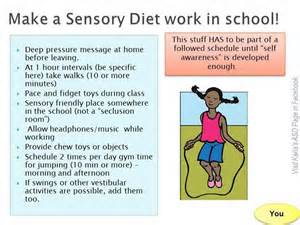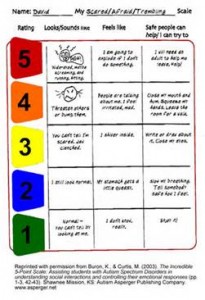Autism spectrum disorder is a neurological disorder that is characterized by deficits in social interactions, communication and restricted repetitive behaviors. “Emotional Regulation is generally defined as the automatic orientation and modification of a person’s emotional state that promotes adaptive or goal-directed behavior (Mazefsky, Herrington, Siegal, Scarpa, Maddox, Schahill & White, 2013).” Emotional regulation is the ability to maintain an emotional state appropriately and effectively.
“Individuals with autism spectrum disorder may fail to use adaptive emotional regulation strategies and instead react impulsively to emotional stimuli with tantrums, aggression or self-injury (Mazefsky et al., 2013).”
Role of Emotion Regulation in ASD
Mazefsky, C. A., Herrington, J., Siegel, M., Scarpa, A., Maddox, B. B., Scahill, L., & White, S. W. (2013). The role of emotion regulation in autism spectrum disorder. Journal of the American Academy of Child & Adolescent Psychiatry,52(7), 679-688.
Where to begin
It is important understand a students abilities to communicate and understand their environment. It is also important to understand the students likes and dislikes to understand how a student is interacting with the people and activities in the school setting. In understanding the student and working with desirable and undesirable behaviors we need to make observations and understand the function of student behavior. This is the start of a Functional Behavioral Assessment or FBA.
A Functional Behavioral Assessment or FBA is the process of gathering information on a student’s behavior and then analyzing the information to determine the purpose or intent of the behavior and/or actions of the student. There are several reasons we would complete a FBA.
- To determine the appropriate placement and services for students
- To identify positive interventions to help students learn appropriate behaviors and interactions
- To increase a students ability to learn by replacing behaviors that interfere with learning with behaviors that promote learning and help the student engage in the educational setting.
A FBA is based on the idea that behaviors occur based on a set of circumstances and interactions with people and the environment. It is also assumed that behavior is governed by antecedents (what happens before), the displayed behavior, and the consequence of the behavior (what they get from engaging in the behavior). Behavior is a form of communication, so in determining the function of behavior we are coming to an understanding of what the student achieves through the behavior (avoidance, attention, escape).
Once an FBA has been completed we can then develop a Positive Behavioral Intervention and Supports or PBIS. A PBIS is a holistic structured behavioral plan. It is a specifically designed behavior plan, with realistic goals that can be supported and utilized across all setting for the student. The planning across the school setting and with families can be an effective plan in helping the student understand and learn new behaviors. The PBIS is constantly evaluated and reassessed for effectiveness with adjustments made based on the assessment to increase the effectiveness of the plan. The goal is to decrease the intensity and/or frequency of the targeted behaviors and to teach safer of more socially appropriate behaviors. There are many layers of support for the student. Our school uses school wide PBIS systems to teach the community of students positive behaviors. The PBIS can be tiered to basic support from the school, to the classroom, to a very individualized plan for the student.
Positive Intervention and Behavioral Support Summary
What we do?
When we need to develop an individualized Positive Behavioral Intervention and Support we base the plan on the Function of the behavior. Sometime the student needs a schedule to regulate anxiety, a “First, Then” chart to understand what comes after a task is complete. Some students need a “Sensory Diet” to help integrate their sensory systems into the school environment.
We teach students in our classroom to recognize and identify their emotional state, and then to use strategies to help them deal with emotions. We work closely with our speech therapist and occupational therapist to label and identify emotions, and to rate activities that help the students calm down and regulate emotions. We also use the Incredible Five Point Scale developed by Kari Dunn Buron.
The following steps may be used when implementing a 5-Point Scale
- Choose a targeted behavior.
- Decide how you will pair the target behavior into the 5 stages that represent the magnitude of the targeted behavior.
- Develop a story or a visual cue to associate with the level of the targeted behavior.
- Teach the student the scale and help them learn to discriminate and identify the levels of the targeted behavior
- Practice the scale with the students, teachers and adults and across all settings.
Our students have had a lot of success in using this scale in identifying emotions and applying strategies to help them cope with a variety of emotional states.
It is so important to understand the student and what they achieve from behavior in determining what intervention to use when helping a child learn to control and regulate their emotions.






